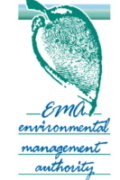F.A.Q's on Designated Activities
Wastewater / Sewage Treatment Facilities
Yes click this link to view
Wastewater is water generated from domestic, commercial, agricultural and industrial activities. The composition of wastewater is 99.9 % water by weight. The remaining 0.1 % consists of microorganisms, organic and inorganic matter.
A WWTF or STF is a system designed to treat wastewater to remove water contaminants/pollutants prior to discharging it to the receiving environment.
- Primary treatment involves the removal of large and suspended inorganic materials from wastewater via a combination of screens, filters or settling tanks. Chemicals such as alum (a type of coagulant used to remove suspended solids from wastewater) are used in settling tanks to aid in settling of suspended material in wastewater through coagulation.
- Secondary treatment processes use microorganisms to biologically remove contaminants from wastewater. Secondary biological processes can be aerobic (a biological treatment process where microorganisms degrade organic contaminants in the presence of oxygen) or anaerobic (a biological treatment process where microorganisms degrade organic contaminants in the absence of oxygen), with each process utilising a different bacterial community.
- Tertiary treatment is an advanced treatment process which further improves the effluent quality through the use of filters or media such as sand, micro filters and synthetic membranes.
- Disinfection reduces the number of pathogenic (relates to viruses, bacterium or other organisms which can cause disease) microorganisms through physical methods such as ultraviolet (UV) light or chemical methods such as chlorination.
- For some WWTFs, depending on the type of wastewater, none of the levels of treatment above is employed. However, pre-treatment methods, such as pH regulation via an equalization tank using a dissolved air flotation device, are employed.
WWTF and STF are sometimes used interchangeably. However, the difference between the two is the type of wastewater to be treated. STFs mainly treat domestic wastewater such as black water (flushings from toilets only) and grey water (waste from sinks, wash basins, showers, kitchens and laundries) and regulated amounts of industrial wastewater while WWTFs additionally treat process wastewater from the oil and gas, commercial, agricultural and food industries etc.
- Specify the type of treatment system to be utilised such as WWTF or STF;
- The design capacity and demonstration of the adequacy of size for the estimated volume of wastewater to be treated;
- A process flow diagram illustrating each component of the system, accompanied by a description of how each component of the system would function;
- The method of disinfection (e.g. in some instances of STFs and agricultural WWTFs, chlorination or UV is the method used);
- Management of leak or spillage if chlorination is the method of disinfection;
- Demonstration of the ability of the WWTF or STF to comply with the permissible levels of the relevant parameters of the Schedule II of the Water Pollution Rules (WPR) 2019;
- Seeding and stabilisation (refer to Question 7 below for additional information) (mostly applicable to STFs and some WWTFs);
- Maintenance regime for the WWTF or STF to ensure its proper operation for the lifetime of the facility;
- Ownership and responsibility for the operation and maintenance of the WWTF or STF for the lifetime of the facility.
- The different types of some wastewater treatment plants, include, but are not limited to:
• STF – (Activated sludge, rotating disc system, submerged aerated filter, suspended media filters, sequencing batch reactor, trickling filter);
• WWTF – [Dissolved Air floatation device (DAF), ultrafiltration systems, reverse osmosis (RO), vacuum filters].
Scrap Metal Yard Facilities
Click this link to view
